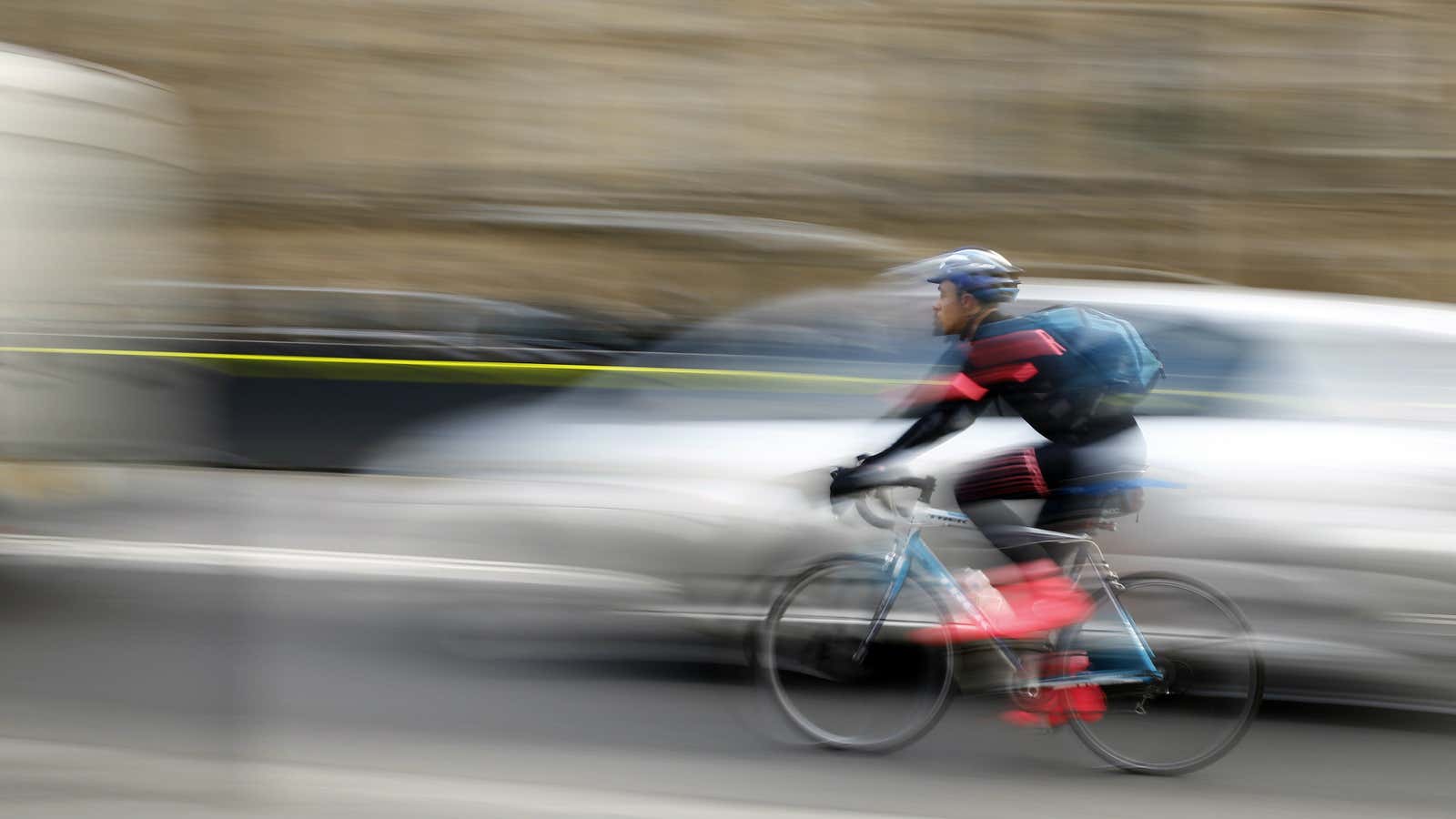Copenhagen is renowned for being a bike-friendly city. At rush hour, parents navigate major roads with kids in their bikes or cycling beside them. There’s a famous “traffic playground,” where kids under eight go to learn to ride a bike in a mini-version of the city, with traffic lights and pedestrian walkways and other urban features. In 2016, 41% of trips to work and school in Copenhagen took place on bicycles; the city’s goal, by 2025, is 50%.
Of course, most of us do not live in small, rich, socialist countries that extol the collective over the individual, and the bike over the car. How can other places promote a healthy urban cycling culture?
Get more women biking, says Jeff Risom, chief innovation officer at Gehl Architects in Copenhagen. Risom has lived in Copenhagen for 17 years. He is also paid to think about how to make cities more about humans and less about cars.
“To make cycling a better experience, you need to invite the most well-behaved and vulnerable populations to feel comfortable biking,” he said. “You will create a virtuous loop.” As soon as you get older people and young kids out on the road, he added, everyone behaves better.
Speaking from experience, biking in London can feel like a death wish. There are too many men acting out latent dreams of being Bradley Wiggins (or just trying to get home for dinner). There are bike lanes, but they are crammed onto roads barely wide enough for cars. Inviting kids into the mix feels insane.
Risom worked on a project to make West London more bike friendly (the initiative died with a change of local political leadership). The research showed that the majority of London bikers were young, white, and male. A key reason why people said they did not cycle was that they did not feel safe. One way to make it safer? Get more young women on the road (older women and children would come later).
“If you’re biking too fast or not following the rules, and an old woman calls you out on it—’hey watch out for me’ or ‘slow down’—that’s a way more powerful deterrent than a law or a policeman,” Risom said.
Danes don’t bike because it’s good for them, but because it’s easy and safe: 76% reported that they feel safe in traffic, according to West London project documents Gehl produced. The main reasons Danes take to their cycles so much instead of cars:
- 56% say it is faster
- 37% say sit’s more convenient
- 29% say it’s cheaper
- 20% say it’s healthier
London was the opposite. The top reported reason to cycle was to get fit (40%) and the next was because it was cheaper (24%). Only 6% cycled because it was convenient and a whopping 96% reported feeling unsafe out on the roads.
Risom says the fact that people use so many modes of transport in Copenhagen means that there’s shared empathy. One-third of cyclists today will be motorists tomorrow; two-thirds of motorists today will be cyclists tomorrow. People identify as citizens who share space, and so they protect that space. “It’s much easier to share if you know what’s it’s like to be on the other end,” he said, dubbing it “embedded empathy.”
“I still marvel at it 17 years later,” he said.
